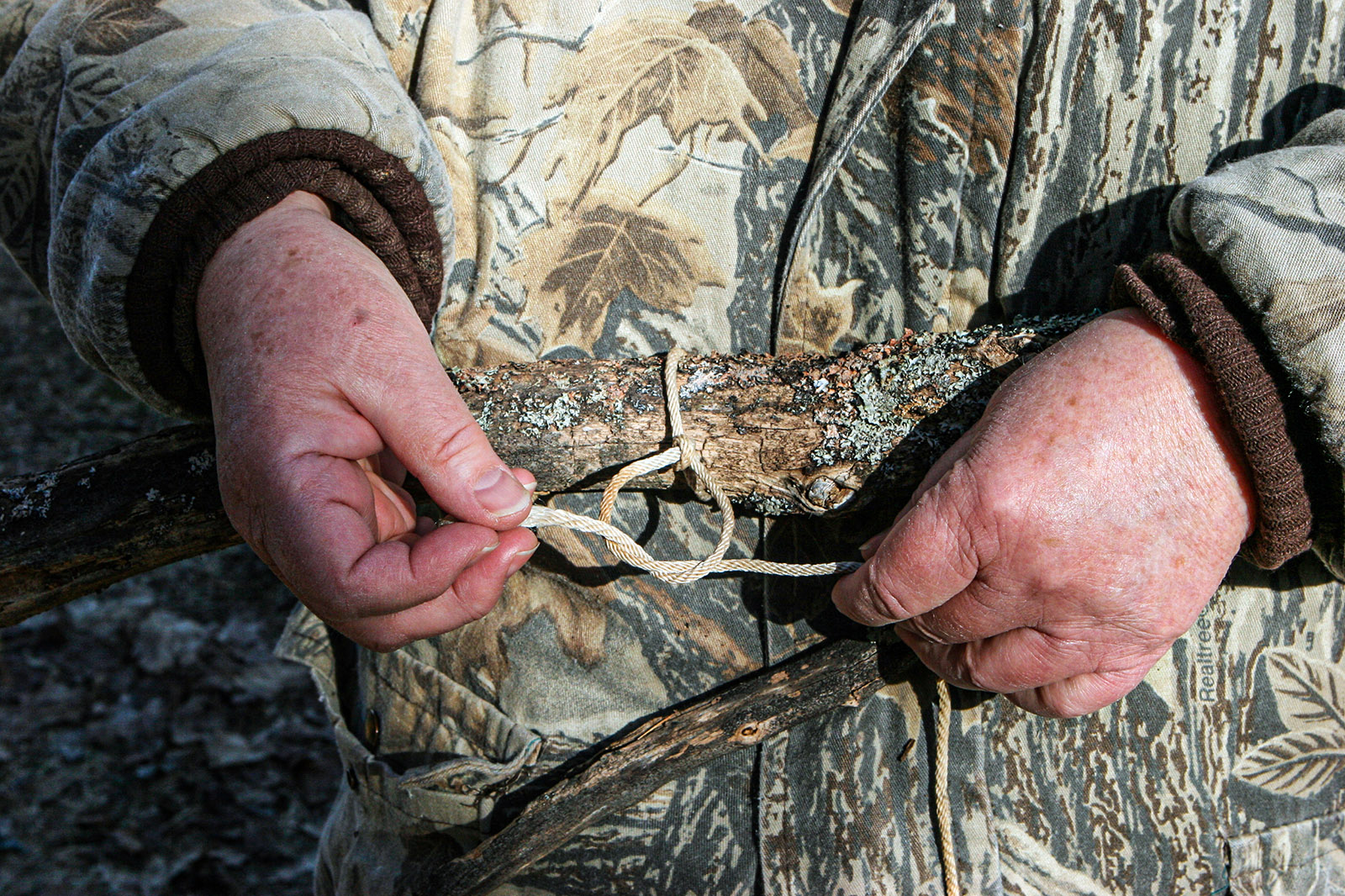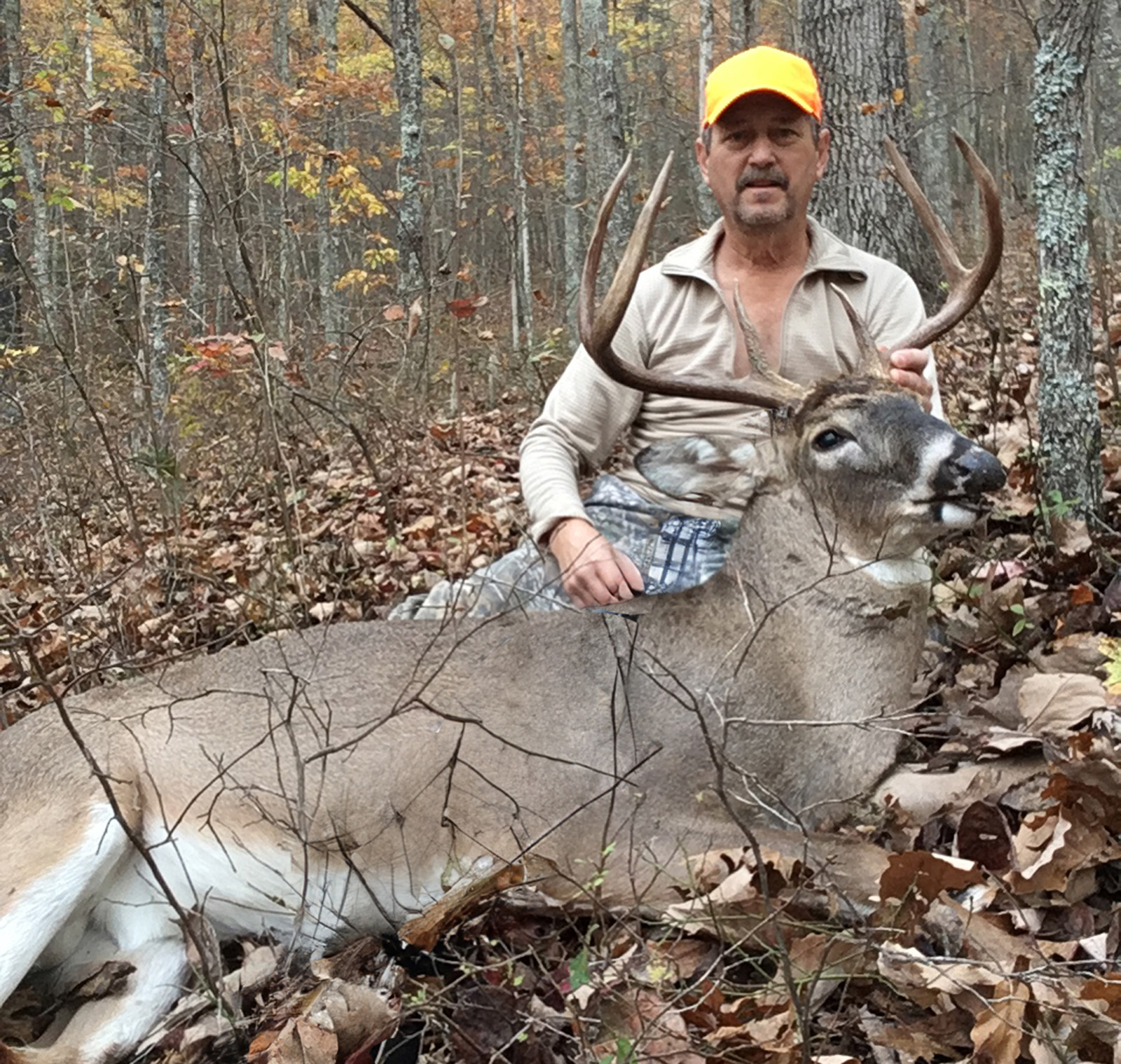By Richard Smith for Whitetail Times
Experienced hunters are always looking for a new trick to out fox an old wary buck. When you think you’ve tried it all take advantage of the technique our author has learned about from a veteran deer hunter!
If you want to see and shoot more bucks where you hunt, you should consider trying a trick veteran whitetail hunter Phil Henry from Kingsport, Tennessee, has used in various states—including Virginia—to score. He’s done well during muzzleloader season in Botetourt County where he has a cabin. One day last fall while hunting out of the cabin, he used the trick to lure four bucks within easy shooting distance of his tree stand by about 1:00 p.m.
“I called in two four-pointers first,” Henry explained. “They came running off the mountain to check out the deer they thought they heard and sniffed around my stand for about five minutes before they walked off.”
Henry passed up those young bucks to wait for a bigger, older animal. He prefers to shoot mature bucks. “Then a good six-pointer came off the hill the same way the pair of four-pointers did,” Henry continued. “He came by my stand and just stood there listening.
“Pretty soon, here comes another buck crashing off the hill from the same direction as the other three while the six-pointer was still standing there. I could see horns on the fourth buck right away without using my binoculars and knew he was a shooter. He had a nice eight-point rack. The biggest buck came by my stand and looked over the hill I was on. That’s when I shot. He was 10 yards from going over the hill. If he had gone over the hill, he would have been out of sight.”
Unfortunately, Henry missed that eight-pointer because his bullet was intercepted by a tree. He said that he either pulled the shot in his haste to take it before the buck went out of sight or that he didn’t see the obstruction before pulling the trigger.
It’s rare for the experienced hunter to miss a shot like that, so he spent a lot of time to confirm that he did indeed miss. Having a hard time believing he missed the deer, Henry devoted most of his time to looking for blood without success. It wasn’t until later, after climbing back in his stand, that he saw the tree his bullet hit.
The important part about relating this experience is that Henry saw four bucks in a short period of time and could have killed a mature whitetail by using a technique he has developed. He has killed plenty of adult bucks by using this method, some of which will be mentioned later, and you can do the same by following his example. He uses a stick on a string to lure bucks into position for shots.
A Stick? On a String??
Henry ties a stick on the end of the rope he uses to raise and lower firearms or bow and arrow to and from his tree stands to imitate the sounds of a deer in the leaves. He uses that added measure in combination with other types of calls such as grunts, doe bleats, and rattling to fool bucks.
“How many times have you grunted to a buck, had them stop to look and listen, and when they didn’t hear or see anything else to confirm another deer was there, they went on?” Henry asked when explaining the rationale behind his innovative technique. Those of you who routinely use a grunt call know that this happens frequently.
“Now, when I get a buck’s attention, I reach for my pull-up rope to move the stick that’s on the end of it so it sounds like a deer walking or trotting in the leaves. That creates the illusion that there’s a buck where he heard the grunts, and that increases the chances a buck will come to investigate.”
A 10-pointer that Henry shot with a muzzleloader in the mountains of Virginia is a perfect example. He was hunting from a tree stand that was on the crest of a ridge. “When hunting the mountains, I’ve gotten in the habit of grunting and working the stick on the string every 10 to 15 minutes,” he explained. “I did a sequence of grunting and working the stick about 1:00 p.m. and I heard something. I looked around and saw a tree 70 to 80 yards away that was moving and shaking. A buck was tearing that tree up. When he looked my way, I could see he had a nice rack, but I couldn’t get a shot because too many branches were in the way.
“He goes back to working the tree over and then looks again. I worked the stick in the leaves and grunted at him. I always have a grunt tube on my left arm. When he heard that he bristled up then circled downhill through some thick stuff. I thought he was gone.
“I kept working the stick and grunting. Then I saw him coming back up to me. He came into the wind and was looking for that other buck he knew was there. I finally shot him at 30 yards when he moved into an opening. It was 20 to 25 minutes from the time I first saw the buck until I shot him. If I had just been using a grunt call, I don’t think I would have gotten that buck.”
The How-To
Any grunt call that sounds realistic will work. Any type of stick that is round and straight will work to create the illusion of a deer in the leaves when worked on a haul rope, but Henry said he prefers a stick that’s about two inches in circumference and about two feet long. He added that he’s used forked sticks and sticks with leaves on them, too, that worked just fine.
Unless you look for and select a stick ahead of time, you will have to settle for what’s available on the ground near your stand. Once you’ve found a suitable stick, you can leave it at the base of your tree or in your stand, for use on future hunts.

The “stick on a string” is a simple method of tying the rope off-center on the stick. Hunters can then lower the stick to the forest floor and by scratching the dry leaves deer within hearing distance will relate the sound to another deer walking.
Most hunters might have the tendency to tie their pull-up rope around the center of a stick, but, for the best results, Phil ties the string to the stick off center. A stick fastened in that manner imitates the sounds of a deer moving through the leaves better. One end of the stick hits the leaves before the other, creating the illusion that a deer is walking. It’s important to make sure your pull-up rope is long enough to reach the ground from a tree stand, of course, and that there are leaves at the base of the tree to work the stick in. Henry said he puts the upper end of the string in the stand where it’s handy, so he can manipulate the string whenever he wants to.
“A lot of hunters clear leaves away from the base of trees they hunt from,” he said. “I try to make sure there are plenty of leaves around the base of my trees that I can work a stick in.”
Henry doesn’t just use the stick on a string trick on big antlered bucks. He also tries to lure small bucks and does close to his stands.
“I’ve noticed that deer tend to follow one another through the woods,” Henry explained. “When a buck comes across the scent of another deer, they usually follow it, even if it’s another buck. If I bring a small buck close to my stand with the stick on a string, the next deer that comes along is likely to follow the scent of the previous deer. In Virginia, I saw 17 bucks in the mountains by doing this where normally you only see a couple of bucks in a week.”

Phil Henry has a hunting camp in Botetourt County, Virginia, where he spends a lot of time hunting during the November rut. He is pictured here with a buck he shot in Botetourt that came in with aid of his “stick on a string” technique.
The experienced deer hunter confirmed the value of combining the use of a stick on a string with a grunt tube when experimenting on a little buck that had four- or five-point antlers. After seeing the deer, Henry grunted and the young buck stopped, looked around, and listened. When it didn’t hear or see anything else, it continued the way it was going. When he grunted a second time, he got the same reaction.
After the young buck started to walk off the second time, Phil put the stick into action—that was enough to increase the buck’s curiosity. By continuing to grunt and manipulate the stick on a string, he got that buck to come right under his stand and it looked over a bank, still trying to find the deer that it thought was there.
“Big bucks have heard hundreds of grunts,” Henry commented. “They will stop and listen and then walk off. If he hears what he thinks is another buck in the leaves, he knows exactly where he is. Now he’s thinking, ‘I heard you grunt and I’ve heard you in the leaves, now I’m going to come find you.’”
Success Stories
Henry said that if a deer is close, he might simply move the stick in the leaves. If a deer is far off, he often pulls the stick up off the ground and lets it fall. He added that using the stick on a string trick works best during the rut. “I’ve been doing this for the last five years and have been pulling in a bunch of deer by doing so,” he commented. “Anybody else can do the same thing. It’s simple and easy to do and you don’t have to buy anything. Everybody’s got a pull-up rope, and there are plenty of sticks laying around in the woods.”
Henry killed the 10-point in Virginia that was mentioned in 2018. In 2019, he killed beautiful bucks in Indiana and Virginia, both of which came in after doing a calling sequence, including working the stick on a string. He said both of those bucks came in looking for the buck they thought they heard.
The buck from Indiana was a 10-point. The Virginia buck from 2019 was a long tined six-point that scored almost 130.
“I had been getting pictures of that six-pointer for three years, and he was always a six-point,” Henry said. “I knew I would shoot him if I ever got an opportunity. I shot this deer during muzzleloader season.”
After the smoke cleared from shooting the big six-pointer, Henry reloaded and was using his binoculars to look for the downed deer when he spotted a 2 ½-year-old eight-point more than 100 yards away.
“I couldn’t resist playing with this deer, so I tried the stick on a string. He immediately looked up the hill in my direction and got alert. After a pause, he turned and walked within 30 yards of my tree, looking over the curve of the hill for the buck he heard. While stopped, he scanned the area over the hill and then walked on in the direction that he thought the sound was coming from,” Henry said.
During 2020, Henry bagged a big 10-pointer with a crossbow in Kansas that scored 159 6/8. The morning that he got that buck at 8:00 a.m. was an exceptional one. Amazingly, he saw 13 other bucks before the one he shot.
“I had seen eight different eight-points, two different nine-points, a three-point and two spikes before shooting that 10-pointer. I had been using grunting and the stick on a string during all this activity,” Henry said. “I had used doe-in-heat scent also, and a couple of bucks came directly into the wind and stuck their noses on the scent bombs. It was just one of those mornings when all you could say is it was crazy!”
Although Henry generally uses a grunt call in conjunction with a stick on a string, he said the stick on a string can be combined with other types of calling such as doe bleats and rattling horns to help get shots at more bucks.
“I’ve gotten to where I’m calling and using a stick on a string almost constantly now,” Henry said. “When hunting in the woods, a buck can pass through the area where it will be able to hear you in three or four minutes. I find myself doing it more and more and more. It keeps you more attentive.
“The best I can explain it is I’m trying to be as good as David Copperfield,” Henry explained, “in creating an illusion that there’s a live deer under my stand right now and the deer that hear it have to come and check it out. It doesn’t work every time, but I am confident I can give you a guarantee that it will improve your odds of pulling that buck that hangs up out of bow range a little closer.
“Stand location is critical. Stands should be placed so that deer cannot see past your stand. That prevents them from seeing there are no deer there, making it necessary for them to come closer to see the deer they think they are hearing. Deer are not stupid. If they can see all the way around the tree you are in and they don’t see another deer to go with the sounds you made, they will leave.
“Put your stand close to heavy cover or some kind of thick edge where deer will hear everything you do,” Henry noted. “When they hear a grunt or a doe bleat and they hear deer in the leaves via stick on a string, presto! You have the illusion that deer are under your stand or very close. They have to come to you to check it out. David Copperfield would be proud!”
Richard P. Smith has been an outdoor writer for over 30 years and his articles have been published throughout the country. Smith has written three excellent books about deer hunting that are valuable references for hunters anywhere that can be ordered from his website at www.richardpsmith.com.
©Virginia Deer Hunters Association. For attribution information and reprint rights, contact Denny Quaiff, Executive Director, VDHA.


